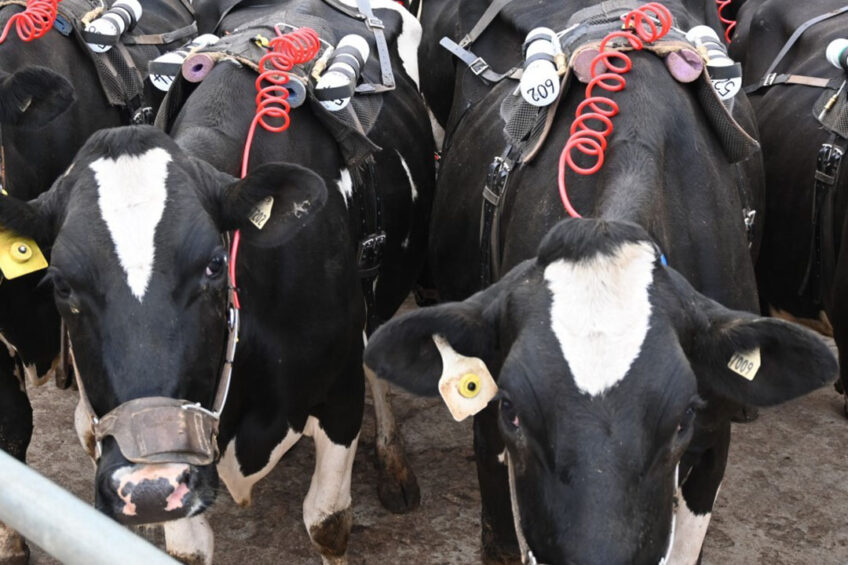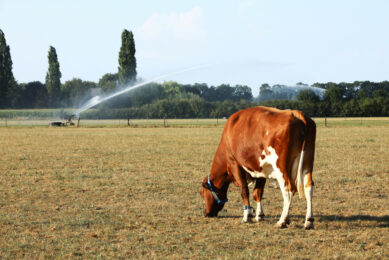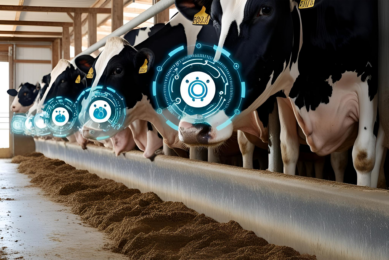Who will win the dairy carbon-neutrality race?

Thousands of dairy farms worldwide have worked to reduce carbon emissions over the last few years, if not for much longer, but only 4 have made a public commitment to being carbon neutral by a given date. The farm that’s first across the finish line is sure to get global attention, and inspire the dairy industry across the planet to achieve further carbon emissions reductions. The race is on! Here are the contenders.
A broad international timeline was put forth in mid-2021 at the 22nd Dairy Conference of the International Farm Comparison Network. Attendees concluded that widespread carbon-neutral dairy farming by 2050 is possible, and the “Net Zero – Pathways to Low-Carbon Dairy” initiative was launched.
Before we look at the self-imposed deadlines and progress of our 4 contenders, let’s review the broad strokes of how dairy farms are coming ever closer to carbon neutrality and what may impede or accelerate the reaching of this milestone.
Reducing methane production
Lowering emissions of methane on dairy farms is critical because over the long term, methane emissions are more than 85 times worse than CO2 emissions in terms of global warming. There are 2 sources of emissions on dairy farms of this very intense greenhouse gas (GHG): cow burps (“enteric” methane) and manure.
Enteric methane emissions can be reduced by up to 95% through feeding cattle supplements of red seaweed.
For putting a halt to methane emissions from manure, biodigesters are critical. The bacteria in the vat digest the manure and produce methane, which is collected and cleaned. It’s then burned in generators (emitting CO2) to create electricity and heat. The nutrient-rich digestate, applied to fields, can also reduce the amount of inorganic fertiliser needed for crop or pasture growth; this helps reduce GHG emissions because fertiliser production requires large amounts of energy.
Together, red seaweed and biodigesters can reduce total methane emissions on a dairy farm by over 90%.
Biomethane can also be used to directly power tractors and other farm vehicles. In September 2021, at the Farming for Clean Air Show in the UK, New Holland’s new T6 180 methane-powered tractor was demonstrated. The methane came from the digester at Park Farm, a commercial research farm owned by the University of Cambridge, which hosted the show.
Together, red seaweed and biodigesters can reduce total methane emissions on a dairy farm by over 90%.
Taxes and grants
Some people consider carbon taxes to be an impediment to progress towards carbon neutrality on farms of all kinds, including dairy farms. That is, if farmers are paying more for fuel with a carbon tax surcharge, as they do in Canada, they have less money to invest in direct emissions-reducing technologies and initiatives on their farms.
However, farmers in various countries may also benefit from government funding schemes and cost-share programmes that support the adoption of carbon-reducing technologies.
Carbon offsets
Although they are used widely across many industries, carbon credits to offset carbon emissions are not being used by any of the 4 dairy farms contending to be the first to reach carbon neutrality.
It’s interesting to note that on 10 March 2022, the well-known US-based Organic Valley cooperative launched a carbon “insetting” programme, supporting the use of on-farm carbon reduction strategies by its member farmers to reach overall cooperative carbon neutrality without carbon offsets.
Practices being considered for the pilot program include planting trees, improved manure management, renewable energy, energy efficiency and enhanced practices.
Organic Valley is one of the world’s largest organic consumer brands and represents approximately 1,700 farmers in 34 US states, Canada, Australia and the UK.
Temperature advantage
Obviously, farms in warmer locations around the world have an advantage over those in colder climates in reaching carbon neutrality. In warmer climates, less or no heat is needed to keep buildings warm, less fuel is used to run farm equipment, pasture can be used year-round or for more months of the year, and so on. As you will see below, the contenders in this article are all located in warmer climates.
Measurement methods
How carbon emissions and reductions are measured must be very similar for all farms in contention in order for any given farm to fairly claim someday to be carbon neutral.
Farms should be able to calculate in a similar way, for example, carbon emissions that existed before changes were made (baselines) and how they are being reduced. For example, how much emissions are slashed by using manure to replace some of the chemical fertiliser used on-farm to grow feed or pasture? Fertiliser has a very high carbon footprint, but manure kept in lagoons or spread on fields emits a large amount of methane.
Another example is electricity generation. If farms are already using electricity that was produced by hydroelectric dams, wind turbines or nuclear reactors, and then switch to solar or wind-powered electricity generation on-farm, carbon emissions reductions related to electricity use are negligible. However, the situation is quite different if the farm switches to solar-generated electricity from using grid electricity that’s produced, for example, through burning fossil fuels like coal.
At the same time, new technologies and methods are being developed to better measure reductions in GHG emissions on dairy farms, such as minimum tillage practices that reduce carbon loss from soil.
The contenders are shown below.
Join 13,000+ subscribers
Subscribe to our newsletter to stay updated about all the need-to-know content in the dairy sector, two times a week.










